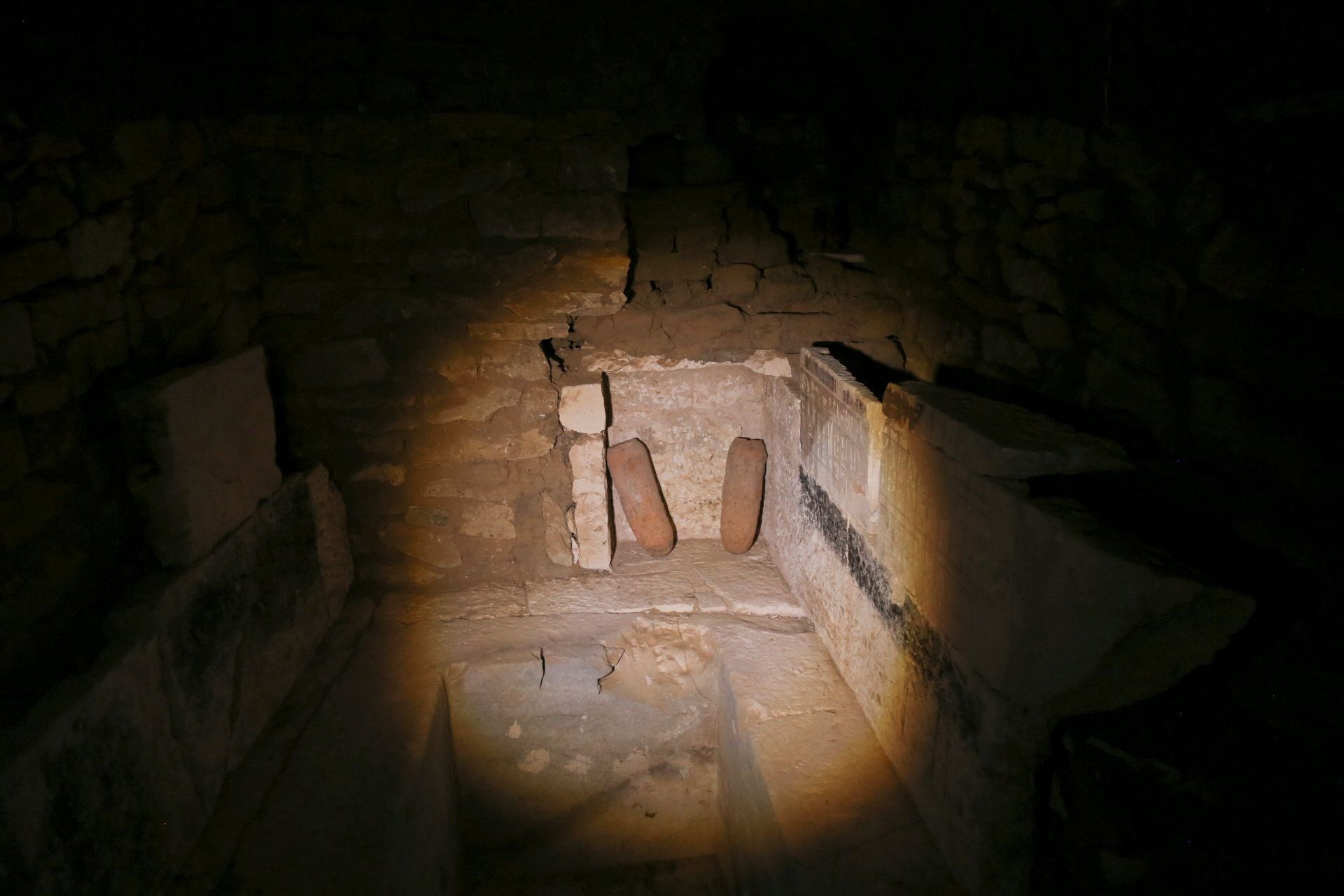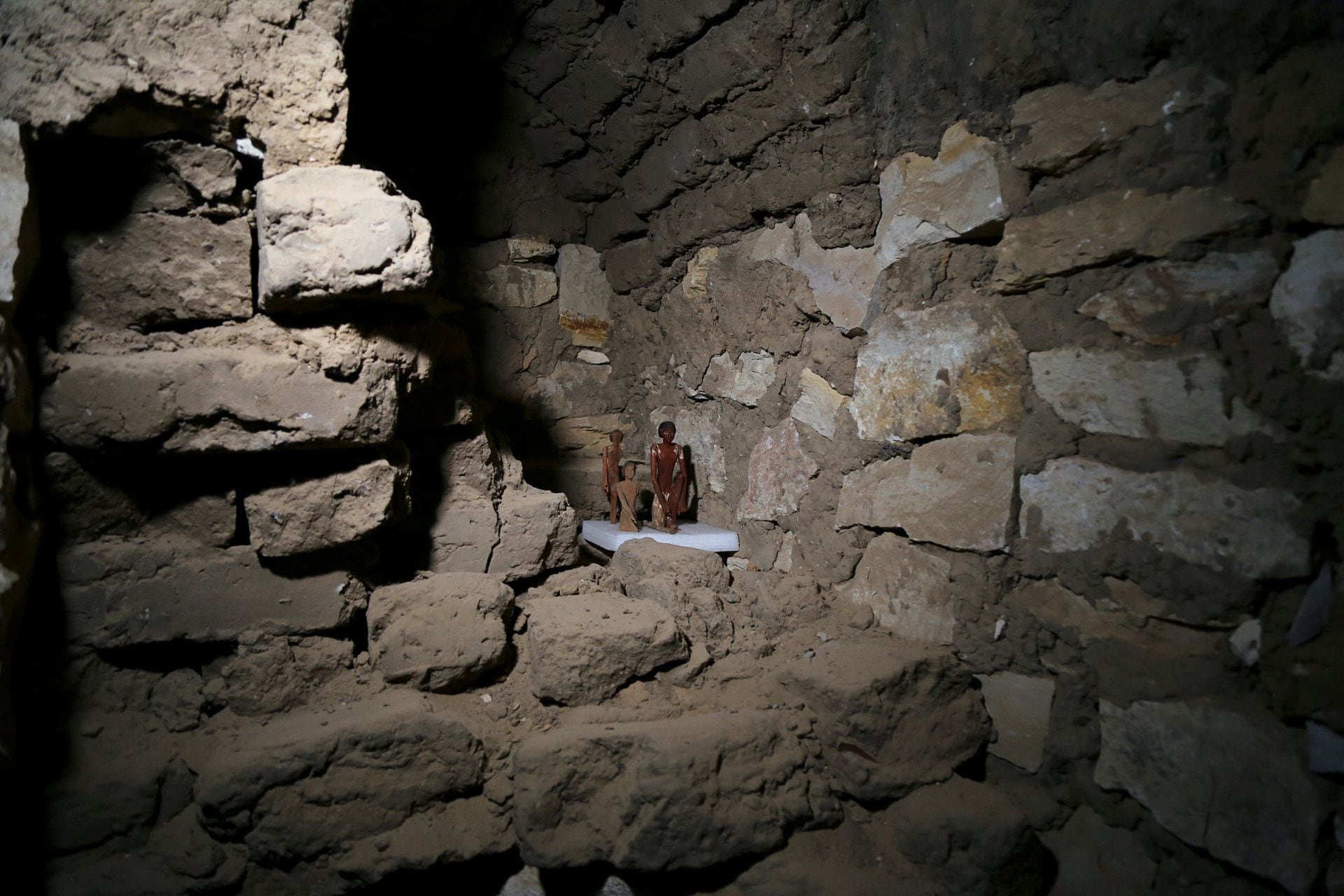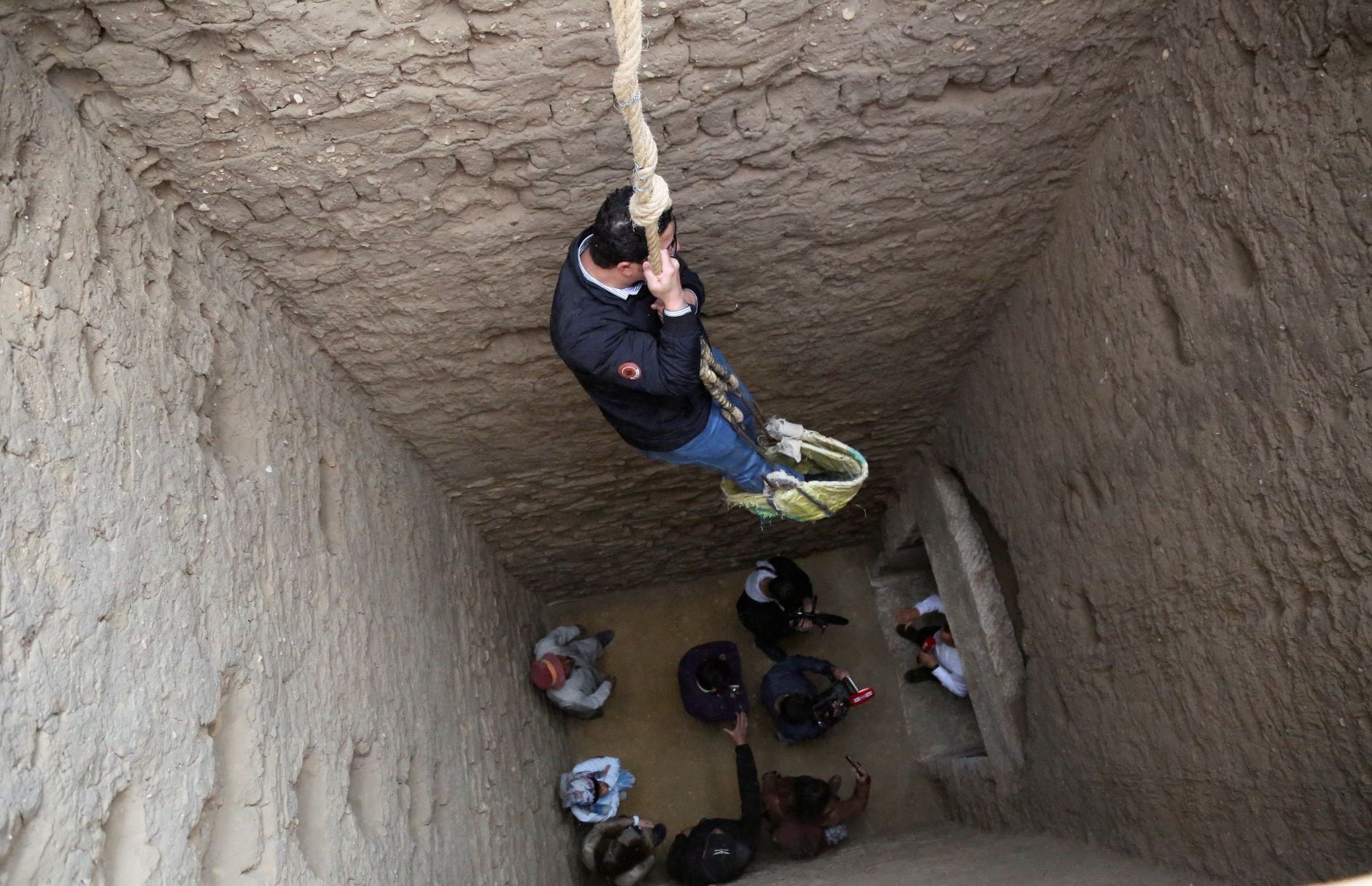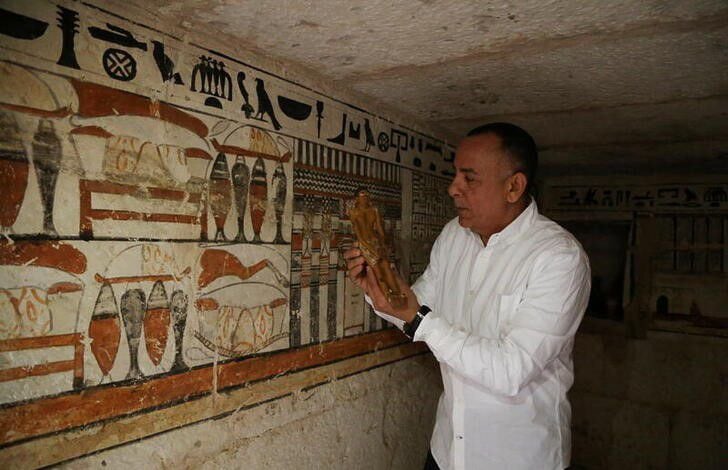
An Egyptian archaeological mission has discovered five tombs decorated with wall paintings belonging to senior officials and priests of the Old Pharaonic Empire (3100-2125 BC) in the Saqqara necropolis, a few kilometers south of Cairo, announced Saturday the Egyptian Ministry of Tourism and Antiquities.
In the tombs, in addition to some colorful paintings in quite good condition, a sarcophagus and other archaeological pieces were also found, the Ministry explained in a statement.
One of them, belonging to an important official named “Eni”, consists of a well that communicates with a burial chamber decorated with burial scenes, such as offering tables, the facade of a palace and glasses of oil, and still preserves a huge limestone sarcophagus, the note detailed.

Another is believed to correspond to the wife of a high official and a third to a priestess who held various positions in the court, such as that of supervisor and purifier.
Another grave belonged to a woman who held titles such as Pharaoh's sole worshiper and that of priestess of goddess Hathor.
The last tomb is located in a rectangular well about seven meters deep and corresponds to “Henu, butler of the royal house”, a high-ranking official in charge of supervising the royal palace and carrying the seals of Lower Egypt.


Saqqara, located about 30 kilometers south of Cairo, was one of the necropolises of the city of Memphis, the first capital of Ancient Egypt, and contains 13 pyramids, the most important being the stepped one of Zoser, the first stone, built around 2650 BC. C., some eight decades earlier than those in Giza. This monument, by architect Imhotep, is considered one of the oldest on the planet's surface and is a UNESCO World Heritage Site.
The five tombs were discovered northeast of the pyramid of King Merenre I, who ruled Egypt around 2270 BC.

Mostafa Waziri, general secretary of the Supreme Council for Antiquities, said Egyptian archaeologists began excavating at the site in September. “The five tombs are well painted, well decorated. The excavations did not stop. We are planning to continue our excavations. We think we can find more graves in the area,” he told reporters at the site.
Since 2018, several important archaeological discoveries have been carried out, some of them by the same Egyptian mission responsible for the discovery of the five tombs, such as that of hundreds of sarcophagi decorated with their respective mummies in a good state of conservation carried out in 2020. These coffins belonging to high officials and priests of the XXVI dynasty (664-525 BC) were considered one of the 10 most important archaeological finds of that year in the world, which allowed “rewriting history” of this period.

The Egyptian authorities hope to open the “Grand Egyptian Museum” near the Giza plateau in the coming months and count on these new discoveries to revive tourism, hard hit by the covid-19 pandemic. This sector, which employs two million people and generates more than 10 per cent of GDP, has been half mast since the Arab Spring of 2011,
(With information from AFP, AP, EFE and Reuters)
KEEP READING
Últimas Noticias
Debanhi Escobar: they secured the motel where she was found lifeless in a cistern
Members of the Specialized Prosecutor's Office in Nuevo León secured the Nueva Castilla Motel as part of the investigations into the case

The oldest person in the world died at the age of 119
Kane Tanaka lived in Japan. She was born six months earlier than George Orwell, the same year that the Wright brothers first flew, and Marie Curie became the first woman to win a Nobel Prize

Macabre find in CDMX: they left a body bagged and tied in a taxi
The body was left in the back seats of the car. It was covered with black bags and tied with industrial tape
The eagles of America will face Manchester City in a duel of legends. Here are the details
The top Mexican football champion will play a match with Pep Guardiola's squad in the Lone Star Cup

Why is it good to bring dogs out to know the world when they are puppies
A so-called protection against the spread of diseases threatens the integral development of dogs



